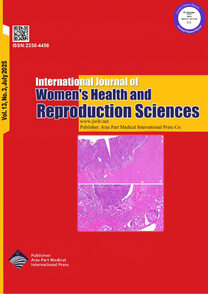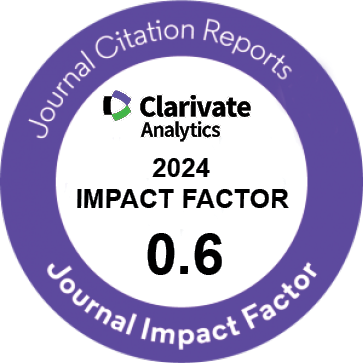| Original Article | |
| Exploring Sexual Function and its Affecting Factors in Iranian Women with Benign Prostatic Hyperplasia-Afflicted Spouses Referring to Urology Clinics of Shahid Beheshti University of Medical Sciences in Tehran: A Cross-sectional Study | |
| Leila Mohamadkhani Shahri1,2, Farzad Allameh3, Malihe Nasiri4, Zohreh Keshavarz5 | |
| 1Student Research Committee, School of Nursing and Midwifery, Shahid Beheshti University of Medical Sciences, Tehran, Iran 2Department of Midwifery, Karaj Branch, Islamic Azad University, Karaj, Iran 3Men’s Health and Reproductive Health Research Center, Shahid Beheshti University of Medical Sciences, Tehran, Iran 4Department of Basic Sciences, School of Nursing and Midwifery, Shahid Beheshti University of Medical Sciences, Tehran, Iran 5Department of Midwifery and Reproductive Health, School of Nursing and Midwifery, Shahid Beheshti University of Medical Sciences, Tehran, Iran |
|
|
DOI: 10.15296/ijwhr.2025.8217 Viewed : 480 times Downloaded : 607 times. Keywords : Women’s health, Sexual health, Spouses, Prostatic hyperplasia, Lower urinary tract symptoms |
|
| Full Text(PDF) | Related Articles | |
| Abstract | |
Objectives: Women’s sexual function can be significantly affected by the benign prostatic hyperplasia (BPH) of their spouses. Therefore, this study aimed to investigate sexual function and its affecting factors in Iranian women with BPH-afflicted spouses. Materials and Methods: The present cross-sectional study included 105 Iranian women with BPH-afflicted spouses. Data were collected using the Female Sexual Functional Index (FSFI), International Prostate Symptoms Score (IPSS), and International Index of Erectile Function (IIEF). Multiple regression was analyzed using SPSS 20 software. Results: The mean age of women and their husbands was 55.41 ± 14.19 and 61.82 ± 12.22, respectively. As revealed by the results of the multiple linear regression, the variables of female’s age (B = -0.266, P < 0.001), male’s educational level (B = 3.914, P = 0.004), female’s sleep disorder (B = 3.780, P = 0.033), The storage symptom of IPSS (IPSS-S) (B = -0.510, P = 0.005) and IIEF Erectile Function sub-score (IIEF-EF) (B= 4.553, P < 0.001) were the final predictors of their “women’s sexual function”. (R2 =0.595, ADJ. R2 = 0.579, R = 0.772). Conclusions: The results of the present study confirm the negative effect of BPH on women’s sexual function. Given that, the variables of female’s age and male’s educational level from the socio-demographic factors, female’s sleep disorder from the factors related to BPH, IPSS-S from the IPSS and IIEF-EF from the IIEF were the final predictors of “women’s sexual function.” Therefore, the condition of men’s disease has a significant impact on their spouses’ sexual function, and thus, it is necessary to support and pay attention to the spouses of patients. In addition, it is essential to incorporate the concept of women’s sexual health with BPH-afflicted husbands into health providers’ retraining programs. |
Cite By, Google Scholar
Google Scholar
PubMed
Online Submission System
 IJWHR ENDNOTE ® Style
IJWHR ENDNOTE ® Style
 Tutorials
Tutorials
 Publication Charge
Women's Reproductive Health Research Center
About Journal
Publication Charge
Women's Reproductive Health Research Center
About Journal
Aras Part Medical International Press Editor-in-Chief
Arash Khaki
Mertihan Kurdoglu Deputy Editor
Zafer Akan






















